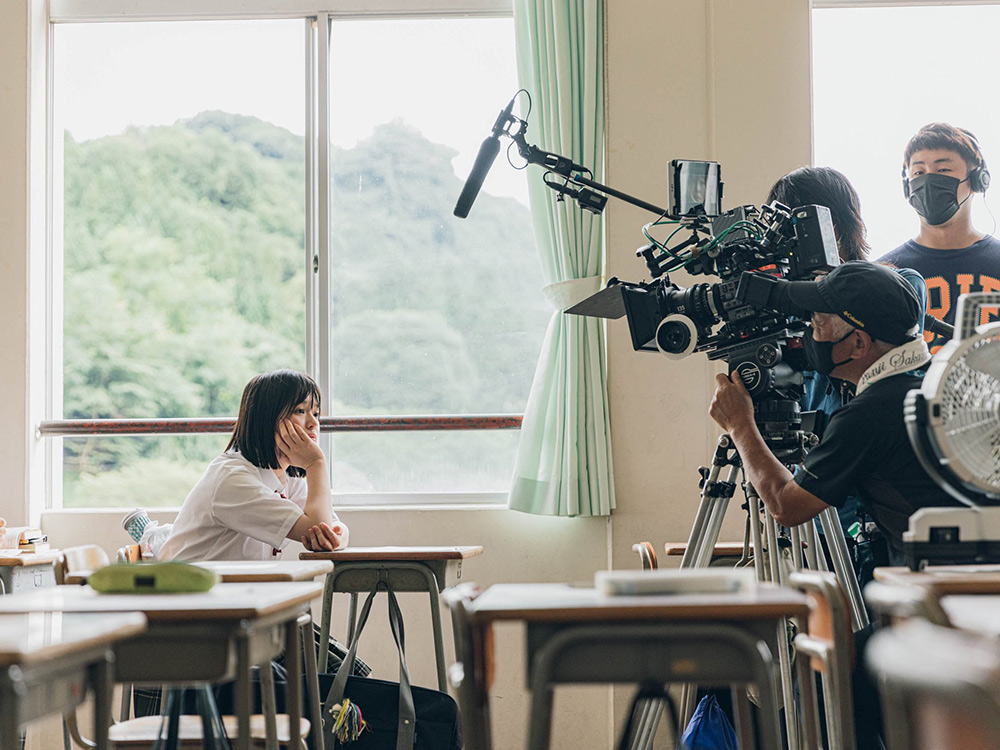!["Winter's Summer" Director Shinichiro Kanagawa Scenario Grand Prize Film Adaptation Project Challenged by CM Director [Director's Interview Vol.313]](https://cinemore.jp/images/923b386cace90f41ac319ffbf9dddcfe6c9d5733604dd6b962ba5a9f36a06c89.jpg)
"Winter's Summer" Director Shinichiro Kanagawa Scenario Grand Prize Film Adaptation Project Challenged by CM Director [Director's Interview Vol.313]
Why master Norimichi Kasamatsu takes pictures
Q: The veteran Norimichi Kasamatsu is in charge of photography. As expected, the quality of the images is overwhelming, but please tell us why you asked Mr. Kasamatsu to do it.
Kanagawa: I like the movies that Mr. Kasamatsu makes, and I have worked with him on several commercials. The moment I heard about this story, I knew it was Kasamatsu-san. Since commercials and movies are obviously different locations, I wanted to work with a cameraman who is familiar with movies. I asked Mr. Kasamatsu to experience the process of filming a movie.
Also, Mr. Kasamatsu's close-up drawings are very strong and captivating. In `` The Subarashiki Sekai '' (2020), in which Mr. Kasamatsu was photographed, Mr. Koji Yakusho's approach was very attractive. If I was going to have Mr. Kasamatsu take the photo, I decided to start from a close-up. Mr. Kasamatsu suggested that the opening cut should have been cut back a little considering the size of the movie theater screen, but I decided to make it so big that people who saw it would go, ``Wow''. I wanted to grab it. "Further forward, further forward," I asked him to take the picture so that the lens was in front of the person's eyes.

"Fuyuko's Summer" ©2022 "Fuyuko's Summer" Production Committee
Q: In commercials, the director draws up the storyboard and the angles are decided accordingly, but I heard that in the case of movies, the director of photography takes the lead in deciding the angles. How did it go this time?
Kanagawa: As you said, I heard that the cameraman decides the angle for a movie, but I wanted to do it myself. Also, since the shooting time was short, I didn't have time to take various angles, and even if I took normal shots, the images would be weak. So, during the location scouting, I called over actors from a theater company that I know (Ultra Mansion Theater Company), and had Mr. Kasamatsu decide the angles for all the shots, and we shot the entire shot while also incorporating my opinions. We edited it, made it into a video storyboard, cut out all the cuts from there, and shot it exactly as it was during the actual production. It's a big deal to decide on the angle for Mr. Kasamatsu, but I decided to take this step in order to clarify what I wanted to photograph.
Q: So, during the actual editing, did you follow the video storyboard?
Kanagawa: The video storyboard was just under 15 minutes long, but the completed movie is 25 minutes long. When I'm filming the actual actors during a performance, I want to make sure to take enough pauses to show them because their acting is so good. When I first connected it, it was about 30 minutes long, but from there it gradually shaped up to its current length (20 minutes).
Q: Mr. Kasamatsu's previous works have a profound impression, but this time he has a youthful and pop feel to them. I guess that's due to director Kanagawa's direction.
Kanagawa: I thought it would be easier to watch because the editing that connects the classic Japanese-style pictures is a little different from previous Japanese films. If the images were taken by a young photographer with modern lighting and edited together, the viewers would probably get a little tired. That's why I asked Mr. Kasamatsu for some parts.

